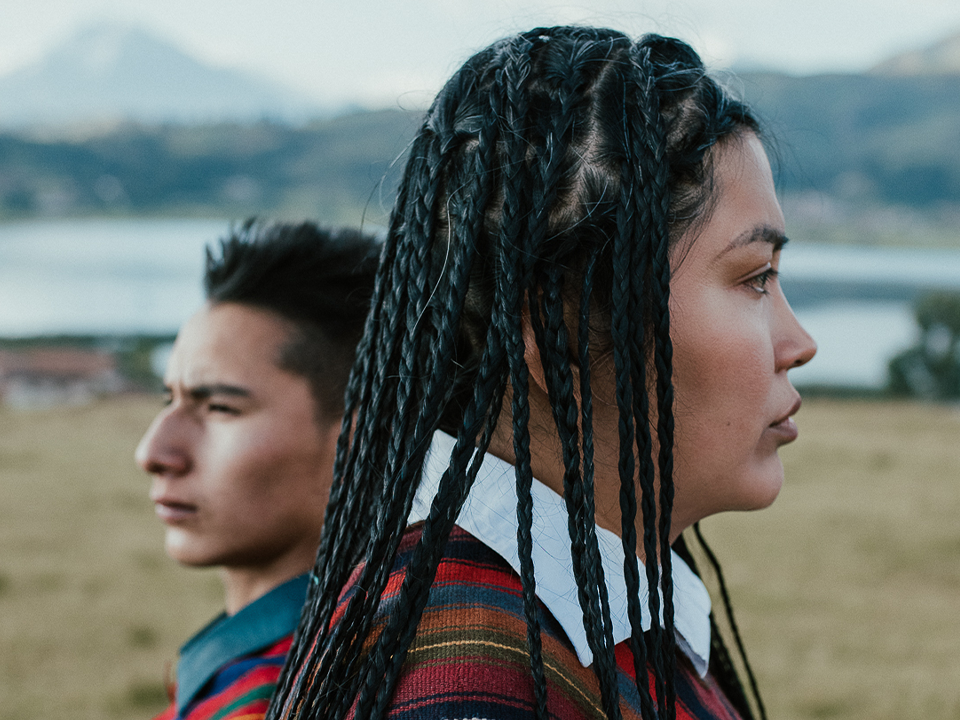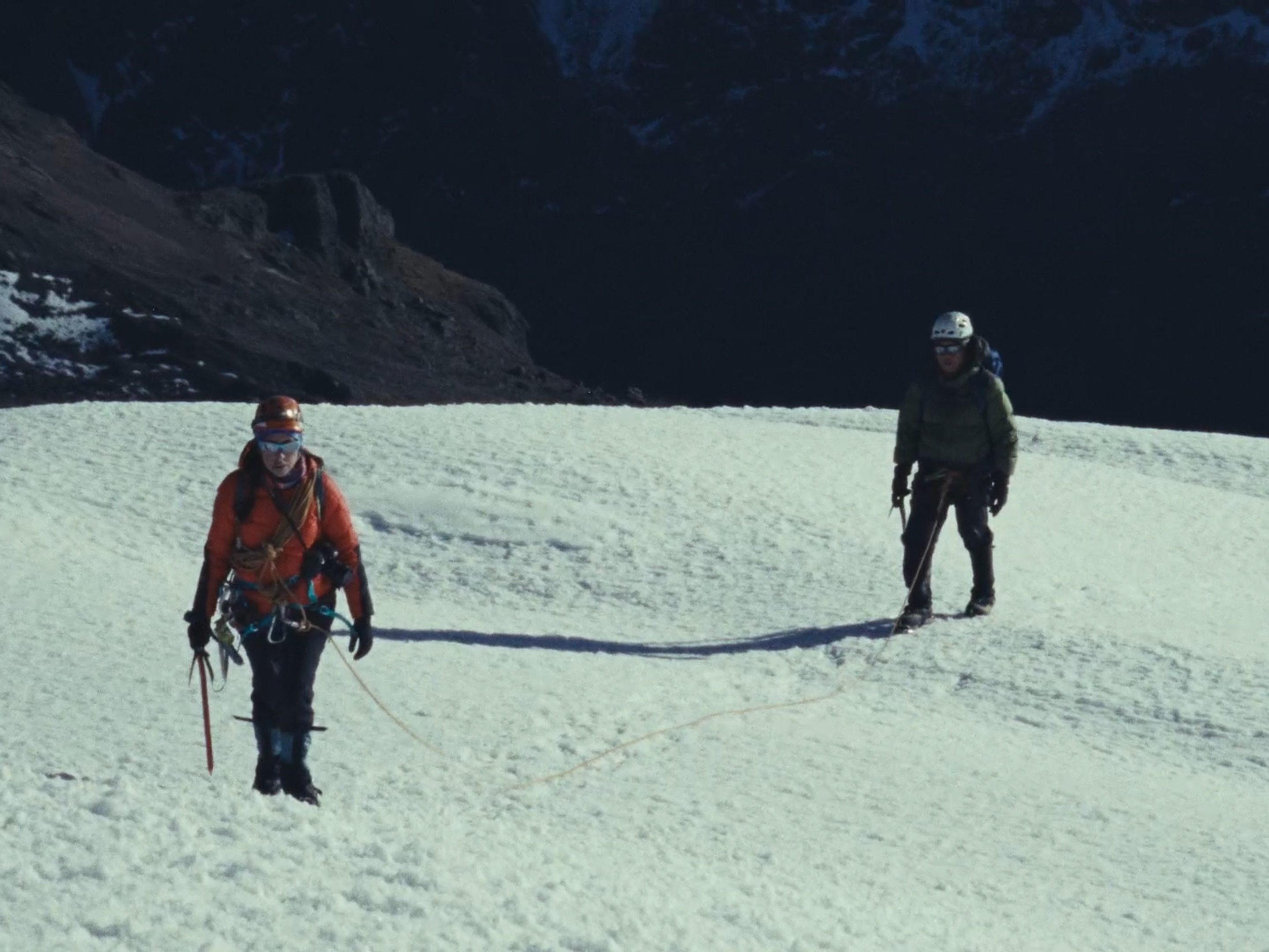SINOPSIS
Mariana, an older Venezuelan woman marked by loss, and Kevin, a young Peruvian with dreams of starting a family, find themselves on a dangerous migration journey to North America. Connected by loneliness and a deep desire to belong, they face challenges, emotional wounds, and the weight of their pasts. Along the way, they discover that the home they long for is in the journey itself and in their company. HOGAR explores resilience and the family roots that unite us and challenge us to forgive.
Mariana cooking in her new home in Canada - Still from the movie "HOGAR".
DIRECTOR´S STATEMENT
I have spent years trying to make sense of my solitude—a lingering emptiness that followed me from my childhood in Cusco, Peru, even after making peace with my family. Strangely, I found a glimpse of comfort not in my hometown but in my Nonna, my roommate’s Venezuelan grandmother, a woman forgotten by both life and her own family.
The story of Kevin and Mariana stems from that same search: how do we build a home when the place we come from is broken? Through their journey, they realize home is not a physical place, but the connections we forge—with others, with ourselves, and with the life we choose to build when we let go of the past.
This film blends drama with satire, my way of processing life’s contradictions—those who migrate out of desperation versus those who turn it into an adventure, political speeches that promise change while people struggle to survive. Mariana and Kevin’s journey is one of self-discovery, learning to see in themselves what they fail to see in others.
At its core, this is a story about love, forgiveness, and the small, quiet moments that make us feel at home. Because no matter where we are, we can always rebuild.
Kevin in the van in Tampico/Mexico - Still from the movie "HOGAR".
Photography Direction Proposal
The photographic proposal for Hogar is inspired by an intimate and immersive realism to convey the harshness of the migratory journey and the struggle for belonging in a world that seems to reject the characters. Through a close and dynamic approach, the camera will capture their vulnerability with long and fluid shots, immersing the audience in their daily lives, much like in Victoria (2015). Following the style of Roma (2018), the story will reflect the political and social backdrop of migration, where the American government reinforces discourses of rejection and criminalization against migrants. The city and its landscapes will serve as a metaphor for these barriers, contrasting the indifference of societal structures with the warmth of the human connections that the protagonists build along their journey.
Visual reference running towards the plane - Victoria (2015)
Composition reference - Roma (2018)
Family dinner reference in Canada. - The Bear T2 (2023)
Color and camera movement will evolve alongside the characters’ emotional journey. In the Darién, earthy and dark green tones will reflect the hardship of the route, with unstable movements conveying tension. In Tampico, warm light and open frames will symbolize a brief respite, while in the United States, cold tones and static shots will emphasize alienation. Finally, in Canada, neutral colors and visual stability will represent the reconstruction of a home. The compositions will expose systemic inequalities, positioning the characters in the foreground while the broader migration crisis unfolds in the background. Solitude will be depicted through wide and isolated frames, while community will be reflected in more dynamic compositions that highlight constant interaction. This visual approach seeks to connect the audience with the struggles and emotions of the protagonists, revealing the beauty in small gestures that bring us closer to the idea of home.
art Direction Proposal
The production design in this film is based on the idea that home is not a static place, but a space in transformation, shaped by relationships, losses, and encounters. Each location represents a stage in the characters' search for belonging, reflecting their emotional state. From the harshness of the Darién to the cold stability of Canada, spaces narrate their internal struggle without words. In moments of uprooting, the environments will be hostile and precarious, transmitting uncertainty and vulnerability. Spaces will be unwelcoming, with scattered objects, devoid of identity. The dense and suffocating jungle offers no refuge, only survival; the muddy paths lead to no clear destination, but rather a constant test of resilience. In these settings, light will be dim, filtered through leaves or enclosed spaces, creating a sense of confinement and fragility. At this stage, the film takes visual inspiration from Sin Nombre (2009) by Cary Fukunaga, where the raw depiction of the migrant journey and the hostility of the environment reinforce the characters' internal struggle.
In Tampico, color and everyday life provide relief, with small gestures and objects that create a sense of home, while in Canada, the apparent stability feels cold and impersonal until the characters gradually claim the space as their own. The evolution of these settings mirrors the emotional journey of the protagonists, shifting from precariousness to the warmth of a chosen family. This transformation draws inspiration from Nomadland (2020) by Chloé Zhao, where minimalism and the exploration of spaces reflect the protagonist's introspection and the search for a home beyond the physical. The production design thus becomes a silent witness to their story, emphasizing that home is not a fixed place, but an emotional construct that is redefined with each step forward.



